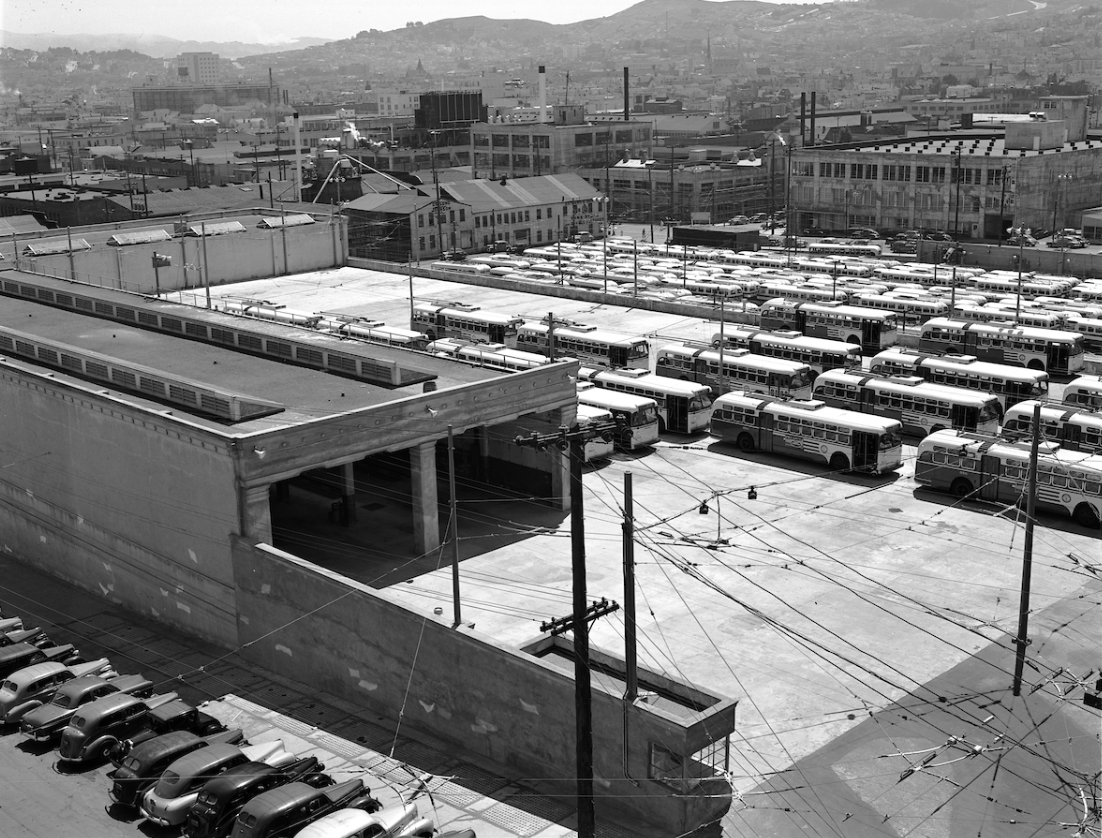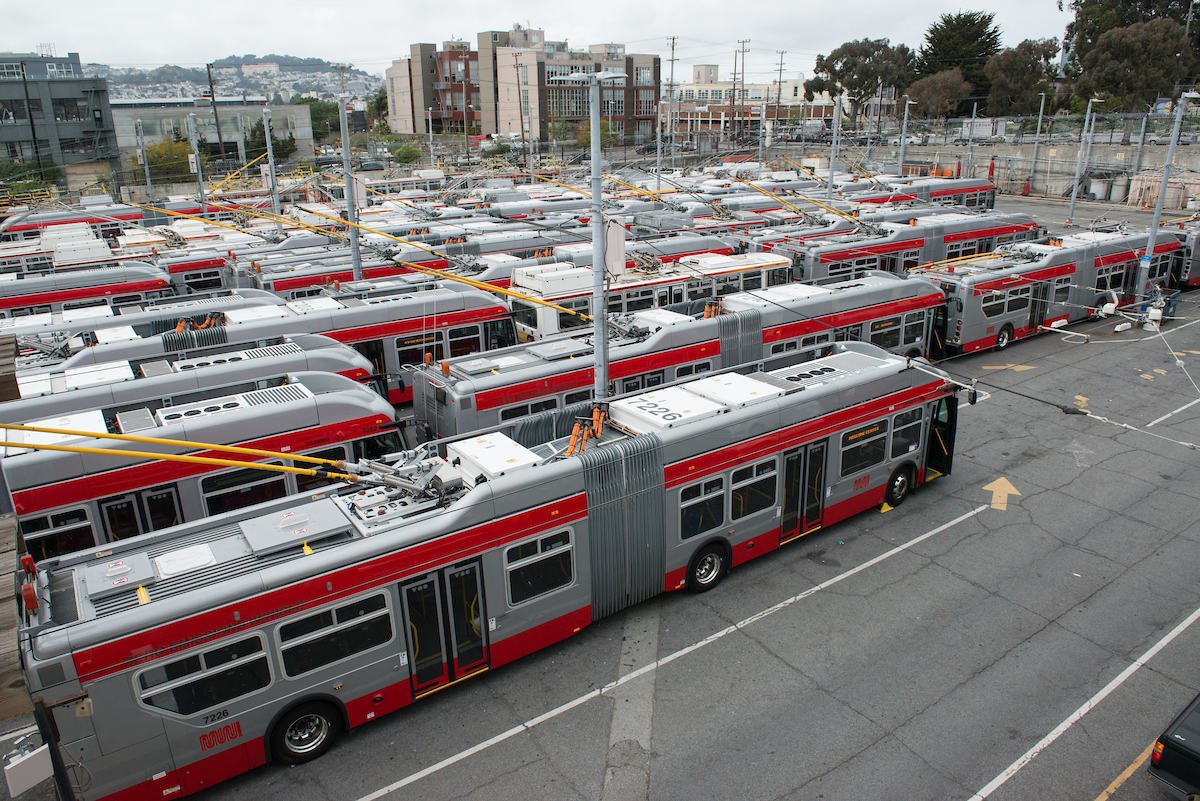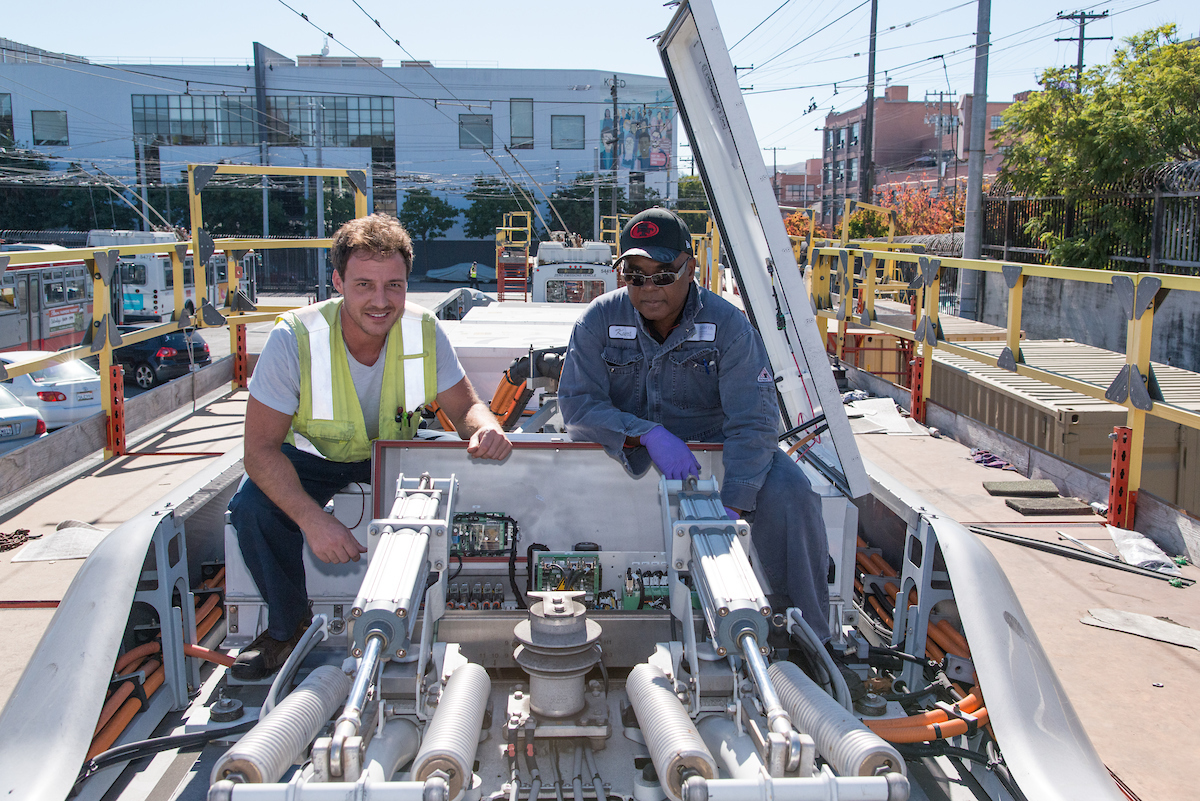Why Replace the Potrero Yard?
Every day, 102,000 Muni customers rely on six bus routes (5 Fulton, 5 Fulton Rapid, 6 Haight/Parnassus, 14 Mission, 22 Fillmore, and 30 Stockton) that run out of Potrero Yard.
Due to the building’s age and changes in bus fleet technology, major improvements are needed to ensure the SFMTA maintains its bus fleet as efficiently as possible. Potrero Yard was built in 1915 and sits on 4.4 acres bounded by Bryant,17th, Hampshire, and Mariposa streets. The two-story structure originally operated as a streetcar facility housing 100 streetcars. It has since been expanded to hold 138 40-foot and 60-foot trolley buses.


San Francisco’s fleet of transit vehicles is the greenest in the United States, and the SFMTA is gearing up to transition to battery electric buses by 2035. The current Potrero Yard is too small to accommodate our growing fleet and too old to retrofit for new technologies. A modern bus facility means San Franciscans get better transit service.

As Muni expands service to keep up with increasing ridership, the SFMTA needs more space to park and maintain its growing fleet. Over the last several years, the SFMTA has increased service by 10% – the largest expansion since the 1970s. By 2025, Muni will operate 200 more vehicles than the nearly 1,300 transit vehicles it operates today.
Potrero Yard also does not meet modern seismic safety and maintenance standards. As a result, employees' ability to efficiently conduct their work is compromised. In the maintenance bays, the ceiling is too low to administer roof repairs indoors or lift buses to repair them from below. This slows down maintenance work, making it difficult to get buses out of the Yard and back into service. Fewer buses in service means longer waits and more crowded buses.

Future Facility
The new facility will be designed to fit in better with the surrounding neighborhood by breaking up the massing and introducing active uses where possible along the street frontages. The facility will have three main levels for bus maintenance and storage that will measure up to 75 feet in height from the corner of Mariposa and Bryant streets. The modern yard will be able to store 213 buses or approximately 50 percent increase in capacity.

In addition, the facility will include the following features:
-
LEED Gold Certified
-
Built to an elevated structural and seismic standard
-
Infrastructure for battery-electric buses
-
Centralized location for Street Operations, Muni’s “first responders”
-
Centralized, modern Muni operator training
-
Ground floor active uses on Bryant and possibly 17th streets
Housing on Top of a Bus Yard?
The 4.4-acre site presents an opportunity for the SFMTA to add another land use or “joint development” above the rebuilt bus facility.
The SFMTA has partnered with other City departments (SF Planning, Mayor's Office of Housing and Community Development, and the Office of Economic and Workforce Development) to explore housing above the Yard. Guided by input from the community, the City and the SFMTA have concluded that housing is a feasible, compatible use at the site and are currently proposing that housing be a principal component of the project.
The City and SFMTA are proposing approximately 560 residential units that include seven (7) additional floors above the bus facility with a total height of up to 150 feet at the tallest location (the 150 foot maximum height includes the 75 foot bus facility).
There are many factors that have informed the size and unit count of the project, including building height, massing, financial feasibility, and shadow considerations on Franklin Square. The SFMTA has worked with the City family and the community to propose a project that is ambitious, achievable, and compatible with the bus yard and its surroundings.
The SFMTA and City have established a 50% affordability target for this project resulting in approximately 280 affordable units. The project's ability to achieve this goal depends on many factors, including the availability of City subsidy, market dynamics, and construction costs.